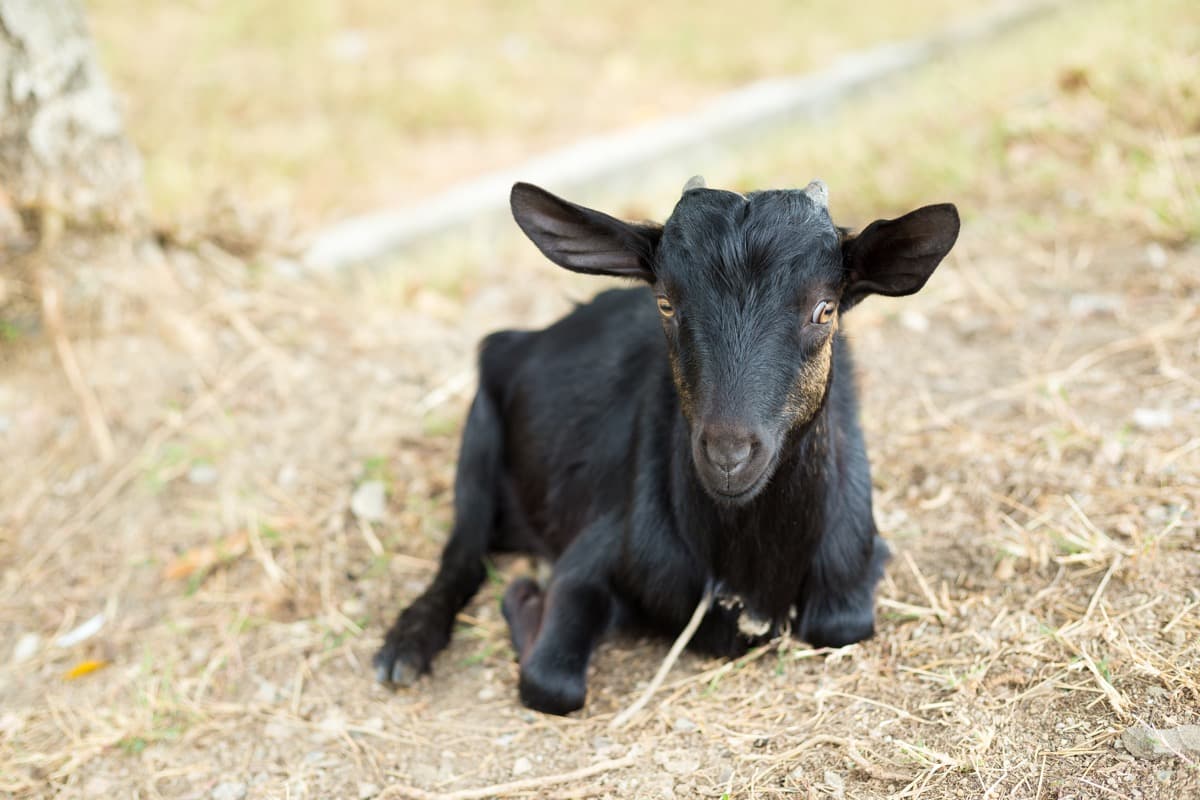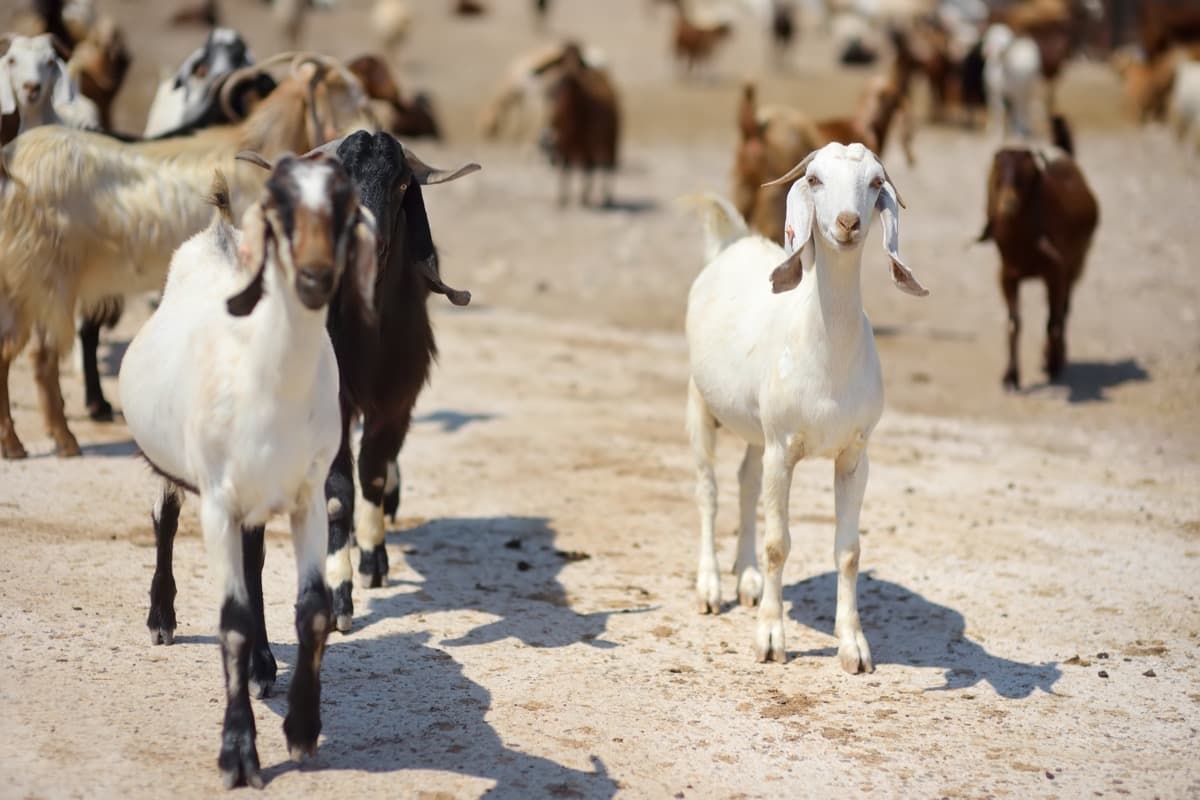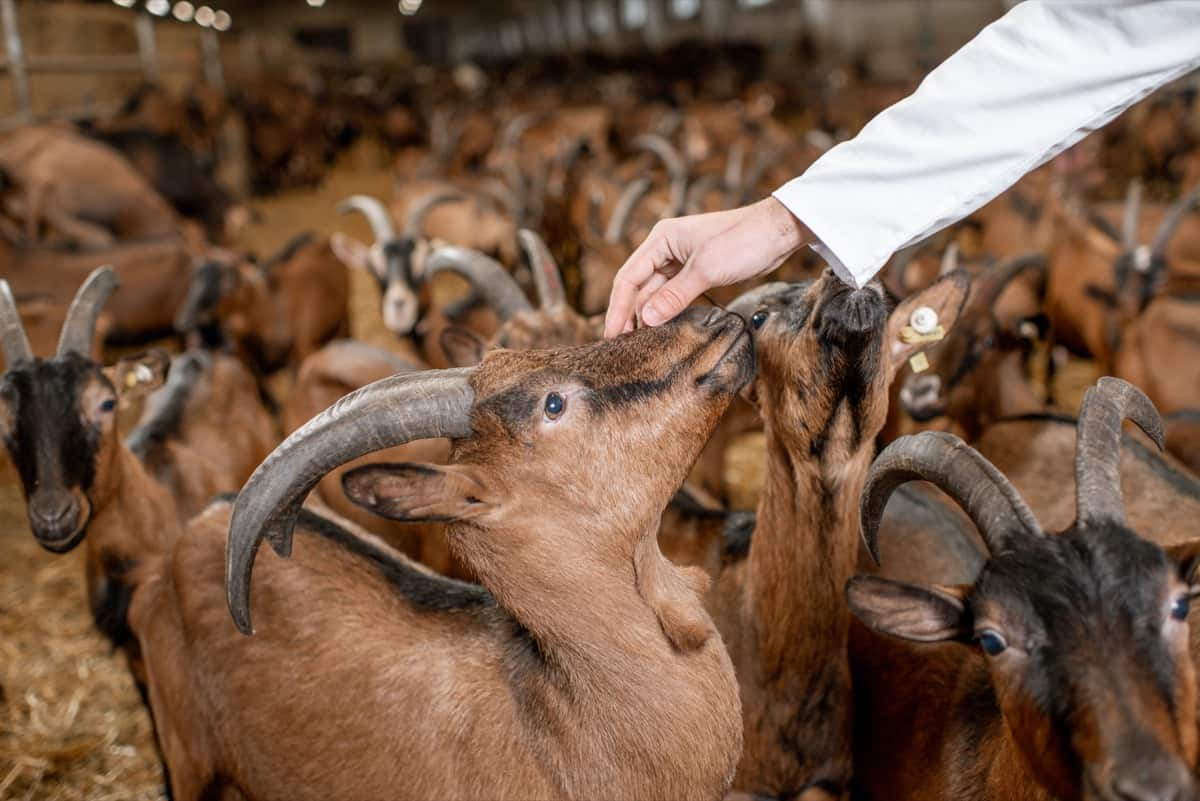Caseous Lymphadenitis (CLA) is a bacterial disease affecting sheep and goats, although it can also occur in livestock animals such as cattle. It is caused by the bacterium Corynebacterium pseudotuberculosis, which is highly contagious and can be transmitted through direct contact with animals or contaminated equipment and facilities.

The disease is characterized by the formation of abscesses in lymph nodes and visceral organs, leading to chronic and subclinical infections. CLA can cause significant economic losses for livestock farmers due to reduced milk and meat production and the costs associated with treatment and management.
Caseous Lymphadenitis Management in Goats
Causes of Caseous Lymphadenitis Disease
- CLA is caused by the bacterium Corynebacterium pseudotuberculosis.
- This small, non-motile, non-spore-forming, pleomorphic, Gram-positive bacteria can occur in curved, coccoid, club, and rod forms (coryneform morphology).
- There are two biotypes of C. pseudotuberculosis recognized: ovine/caprine biotypes and equine/bovine biotypes. The ovine/caprine biotypes lack nitrate-reducing capacity and mainly affect sheep and goats, causing superficial and visceral abscesses.
- The equine/bovine biotype usually reduces nitrate and mainly affects horses and cattle, causing ulcerative lymphangitis. The bacterium is highly contagious and can be transmitted through direct contact with infected animals or contaminated equipment and facilities.
Occurrence of Caseous Lymphadenitis Disease
- CLA has a worldwide distribution, and the disease has likely been disseminated worldwide by importing infected animals.
- CLA has been reported in various North and South American regions, including Australia, New Zealand, the Middle East, Asia, and Africa.
- There have been increasing reports of CLA in Britain and other European countries recently. The disease significantly impacts the livestock industry, causing economic losses due to the reduced milk and meat production and costs associated with treatment and management.
Disease Cycle of Caseous Lymphadenitis in Goat
- The disease cycle of Caseous Lymphadenitis (CLA) in goats involves the transmission of the bacteria Corynebacterium pseudotuberculosis through direct or indirect contact with infected animals or contaminated materials.
- The bacteria can survive in the environment for up to six months or more, increasing the risk of transmission through contact with contaminated objects or surfaces.
- Infected goats develop abscesses in their lymph nodes and visceral organs, which can rupture and release pus containing the bacteria.
- The bacteria can then contaminate the environment, increasing the risk of transmission to other animals. Traumatized buccal mucosa in goats can also increase the risk of infection through contaminated feed.
In case you missed it: Tetanus Management in Goats: Disease Symptoms, Treatment, Diagnosis, and Prevention

Symptoms of Caseous Lymphadenitis Disease in Goat
- Symptoms of CLA in goats may include swelling and inflammation of peripheral lymph nodes, such as those in the head and neck regions, leading to the formation of abscesses.
- These abscesses may rupture and release the pus, leading to secondary infections and scarring.
- In more severe cases, the disease may progress to affect internal organs, leading to respiratory distress, weight loss, and decreased milk production.
- Affected animals may also display signs of lethargy, fever, and loss of appetite. Sometimes, the disease may be subclinical, with no visible symptoms.
Diagnosis of Caseous Lymphadenitis Disease in Goat
- In more severe cases, diagnosis of Caseous Lymphadenitis disease in goats is based on clinical signs and lesions, such as abscesses in peripheral lymph nodes and internal organs.
- Radiographs can also be useful in identifying affected central nodes, which the culture of tracheal washings can confirm.
- Gram and Giemsa staining can be used to identify the bacteria. Isolation of the organism from purulent material from abscessed lymph nodes in live animals or from abscesses of internal organs in dead animals can also be used for diagnosis.
- ELISA tests can detect antibodies directed against either cell wall antigens or exotoxin (Phospholipase D – PLD).
- Additionally, detecting INF-γ by ELISA, an indicator of cell-mediated immunity, can be used to demonstrate CLA in eradication programs.
- Molecular techniques such as PCRs targeting 16S rDNA and pld genes have also been used in recent years to diagnose caseous lymphadenitis.
Treatment and Control of Caseous Lymphadenitis Disease
There is no specific treatment for Caseous Lymphadenitis (CLA) in goats. The available antibiotics are usually ineffective due to the chronic nature of the disease, the intracellular location of bacteria, and the formation of biofilms. Therefore, controlling the spread of the disease is the best approach.
The control measures include isolating and removing affected animals, segregating newly introduced animals for 2-4 months, proper sanitation, disinfection of equipment and facilities, and avoiding practices that cause skin wounds, such as tattooing and shearing. Additionally, vaccination is a potential tool in CLA control. There are commercially available vaccines composed of killed bacteria, but these have variable efficacy, and some cause false-positive reactions in the serological tests.
Preventive Measures of Caseous Lymphadenitis Disease in Goats
- Preventive measures for CLA in goats include implementing proper sanitation and biosecurity measures to reduce environmental contamination and limit the spread of the disease.
- Facilities and instruments should be properly cleaned and disinfected with common disinfectants such as hypochlorite, formalin, and cresol.
- Safety measures to prevent animal injuries can be implemented to reduce the risk of infection.
- Vaccination is recommended as a control measure in countries with a high incidence of CLA. Commercially available vaccines containing inactivated PLD of C. pseudotuberculosis or other pathogens can be used, but using PLD toxoids in goats may result in adverse effects.
- Live vaccines targeting the PLD gene’s attenuation can provide a longer-lasting immune response.
In case you missed it: Anthrax Management in Goats: Disease Symptoms, Treatment, Diagnosis, and Prevention

Conclusion
The disease leads to economic loss due to reduced productivity, treatment costs, and animal value. Diagnosis is based on clinical signs and lesions, culture, staining, and molecular techniques. Antibiotic treatment is not very effective, and the best approach is prevention through good biosecurity measures, vaccination, and culling of infected animals. Early detection, prompt treatment, and preventive measures are essential to control and eradicate this disease.
- Deworming Schedule for Dogs/Puppies: A Beginners Guide
- How to Prevent and Control Parasites in Goats
- Beneficial Insects in Pest Management
- Natural Solutions for Pest Control in Flower Gardens
- Types of Fungicides Used in Agriculture
- Common Issues in the Fruit Development Stage of Pomegranate Farming
- Fruit Development Issues in Papaya: Easy Solutions and Treatment
- Soil-Borne Diseases and How to Protect Your Plants
- Practices to Prevent Disease Spread in the Garden